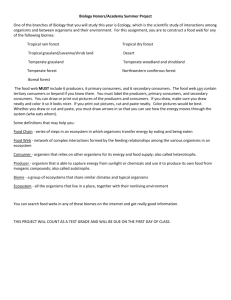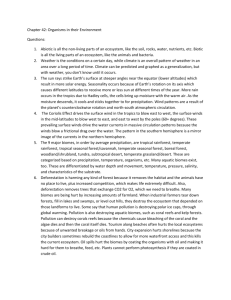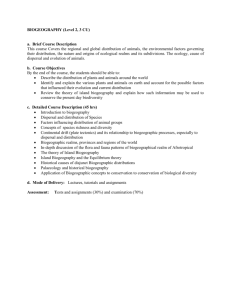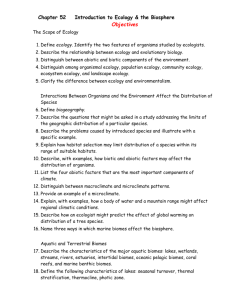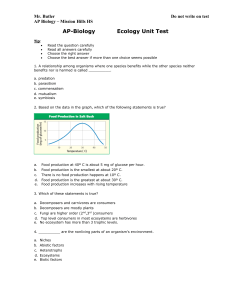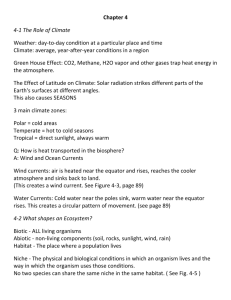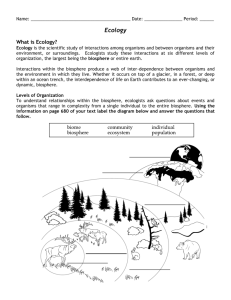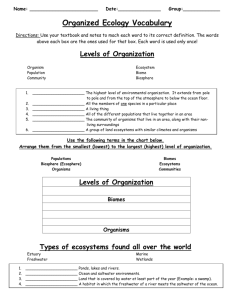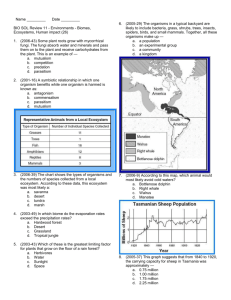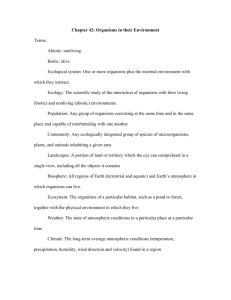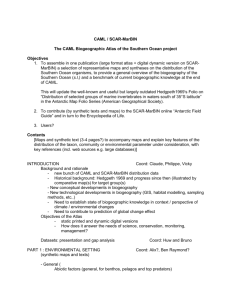Chapter 52: Ecology and The Distribution of Life
advertisement
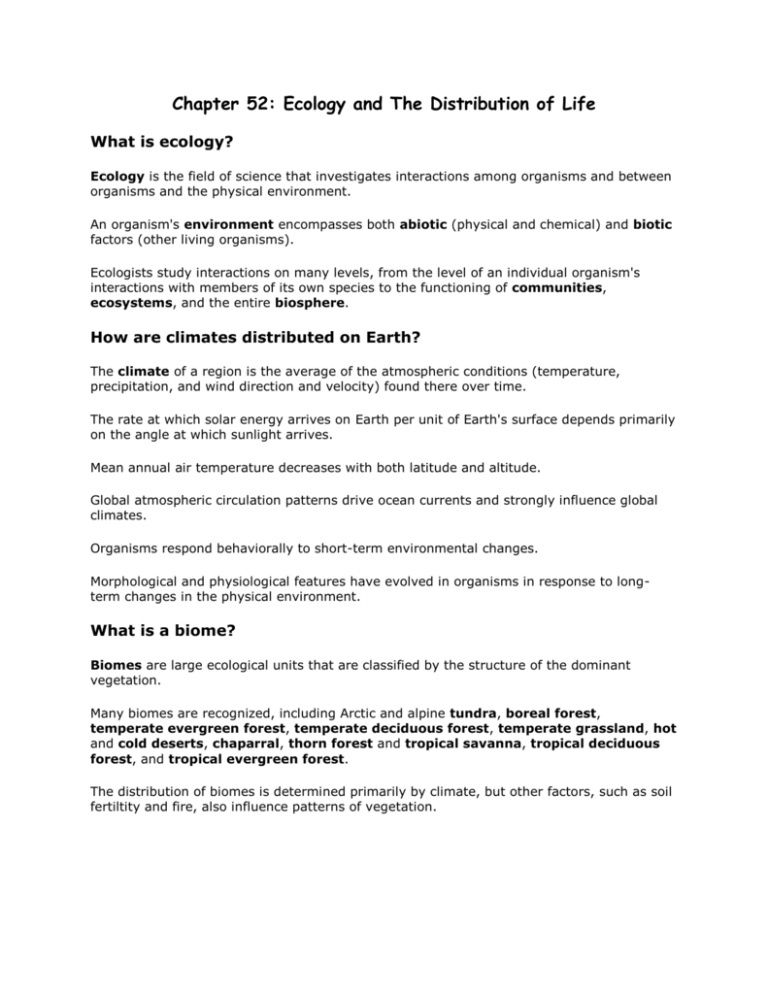
Chapter 52: Ecology and The Distribution of Life What is ecology? Ecology is the field of science that investigates interactions among organisms and between organisms and the physical environment. An organism's environment encompasses both abiotic (physical and chemical) and biotic factors (other living organisms). Ecologists study interactions on many levels, from the level of an individual organism's interactions with members of its own species to the functioning of communities, ecosystems, and the entire biosphere. How are climates distributed on Earth? The climate of a region is the average of the atmospheric conditions (temperature, precipitation, and wind direction and velocity) found there over time. The rate at which solar energy arrives on Earth per unit of Earth's surface depends primarily on the angle at which sunlight arrives. Mean annual air temperature decreases with both latitude and altitude. Global atmospheric circulation patterns drive ocean currents and strongly influence global climates. Organisms respond behaviorally to short-term environmental changes. Morphological and physiological features have evolved in organisms in response to longterm changes in the physical environment. What is a biome? Biomes are large ecological units that are classified by the structure of the dominant vegetation. Many biomes are recognized, including Arctic and alpine tundra, boreal forest, temperate evergreen forest, temperate deciduous forest, temperate grassland, hot and cold deserts, chaparral, thorn forest and tropical savanna, tropical deciduous forest, and tropical evergreen forest. The distribution of biomes is determined primarily by climate, but other factors, such as soil fertiltity and fire, also influence patterns of vegetation. What is a biogeographic region? Biogeography is the scientific study of the distributional patterns of populations, species, and ecological communities. Biogeographic regions are based on the taxonomic similarities of the organisms living within them. A species that is found only within a certain region is said to be endemic to that region. Three scientific advances have played a role in explaining the distributions of species: the understanding of continental drift; the development of phylogenetic taxonomy; and the theory of island biogeography. Area phylogenies are phylogenetic trees that show where species originated and where they now live. The theory of island biogeography predits an equlibrium number of species on an island based on rates of immigration of new species and rates of extinction of species already present. Both vicariant events and dispersal generate biogeographic patterns. When formerly separated land masses come together, many species from both biotas may disperse into the other region, a phenomenon known as biotic interchange. How is life distributed in aquatic environments? The oceans are divided into distinct biogeographic regions by currents that generate striking physical and biological discontinuities. The main biogeographic divisions of the oceans coincide with regions where the surface water temperatures and salinities change relatively abruptly. Fresh waters are divided into river basins and thousands of relatively isolated lakes. Most organisms that live in fresh water cannot survive in the oceans, and vice versa.
